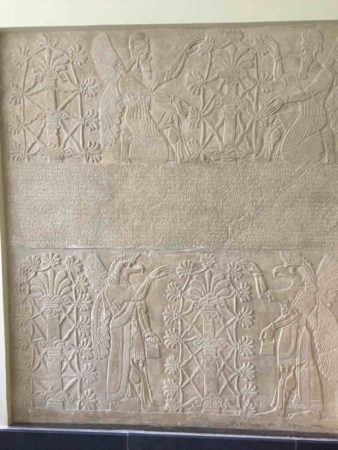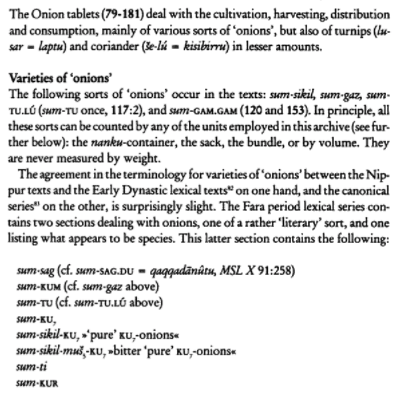- Development of a Statistical Crop Model to Explain the Relationship between Seed Yield and Phenotypic Diversity within the Brassica napus Genepool. Look for primary raceme area.
- Screening of Date Palm (Phoenix dactylifera L.) Cultivars for Salinity Tolerance. In Oman, Manoma and Umsila are particularly tolerant.
- Genetic structure and isolation by altitude in rice landraces of Yunnan, China revealed by nucleotide and microsatellite marker polymorphisms. Geneflow is horizontal, adaptation vertical.
- Breeding Perennial Grain Crops Based on Wheat. By adding a wild genome.
- European cowpea landraces for a more sustainable agriculture system and novel foods. 24 of them, no less. But you have to start somewhere, I suppose.
- Genetic diversity of Elaeis oleifera (HBK) Cortes populations using cross species SSRs: implication’s for germplasm utilization and conservation. From 532 palms in 19 populations to 34 individuals.
- Large-Scale Screening of Intact Tomato Seeds for Viability Using Near Infrared Reflectance Spectroscopy (NIRS). Good-bye germination tests?
- Genetic identification of ‘Limau Kacang’ (Citrus sp.), a local mandarin cultivated in West Sumatra by sequence-related amplified polymorphism (SRAP). It’s a ponkan.
- Cassava haplotype map highlights fixation of deleterious mutations during clonal propagation. Cassava is decaying genetically, but breeders are helping.
- Ancient genomic changes associated with domestication of the horse. The ancient DNA of immediate post-domestication horses suggests that the stallion bottleneck happened later.
- Genetic Diversity and Population Structure of Two Tomato Species from the Galapagos Islands. They mirror island formation.
- The Tea Tree Genome Provides Insights into Tea Flavor and Independent Evolution of Caffeine Biosynthesis. It evolved caffeine independently of coffee but not cacao. And flavour is down to a whole genome duplication.
- The contribution of international vegetable breeding to private seed companies in India. It can still make one, but for traits rather than varieties.
- Domestication, diversity and use of Brassica oleracea L., based on ancient Greek and Latin texts. Their use as a hangover cure has a long and august pedigree. No word on their raceme area.
Assyria in Gatersleben
I’m not sure if I said here that I visited IPK, the German national genebank, a few weeks ago. I did on Instagram.
Great facilities, great people, great work: but, though bigger and better resourced than average, in most ways like many other genebanks around the world. Except, that is, for the Assyrian relief in the entrance hall.

Well, the plaster cast of the Assyrian relief anyway. Nobody seemed to know where the original was, but there was general agreement that the copy was there because it depicted plant breeding. Of course, I took that as a challenge, and after a few minutes playing around with Google’s image search feature, I ran it to earth at the Met.
Each register of imagery shows a pair of supernatural figures flanking a stylized “sacred tree.” Further sacred trees can be seen to the left, and similar imagery continued around the room from which this slab came. The tree is thought to represent the prosperity and agricultural abundance of Assyria, and perhaps on one level the state itself. The supernatural figures are protective, and similar to those shown at larger scale throughout the palace. The gesture performed by the bird-headed figures with bucket and cone has been much discussed. One suggestion is that it symbolizes the fertilization of the land through the imagery of artificial date-palm fertilization, in which male date-spathes are used to fertilize female plants. The Assyrian term for the cone, however, seems to be “purifier,” and it is therefore likely that the symbolism has as much or more to do with magical protection.
So, maybe plant breeding, maybe not, but well worth having in the entrance lobby to a plant breeding institute containing a genebank.
But in locating the stela I ran across an article on Mesopotamian agriculture from the Oriental Institute that mentioned something called the Philadelphia Onion Archive.
No way to let that go either, naturally. It turns out that the Philadelphia Onion Archive really does consist of an archive of material on onions, kept in Philadelphia in the unwieldy shape of numerous clay tablets inscribed in cuneiform in the Akkadian language. Fortunately, there’s a translation online. Which means we know how many types of onions were grown during the reign of King Shar-Kali-Sharri, over 4,000 years ago.

And for how many places around the world can we say that even now?
Brainfood: Dope diversity, Potato chips, Conservation costing, Island breeding systems, Indus civilization cereals, Drone phenotyping, Wild rice in Asia, Wild rice & Native Americans, Pearl millet temperature, Climate change & fruit/veg
- Cannabis Domestication, Breeding History, Present-day Genetic Diversity, and Future Prospects. The traditional landraces are being contaminated and need urgent collection and evaluation by dedicated professionals.
- Cold sweetening diversity in Andean potato germplasm from Argentina. 5 out of 48 Andigena landraces make good chips.
- Considering cost alongside the effectiveness of management in evidence-based conservation: A systematic reporting protocol. Here comes the metadata. No excuse now.
- Self-compatibility is over-represented on islands. 66% vs 41% in Asteraceae, Brassicaceae and Solanaceae. Any crop wild relatives in the list?
- Cereals, calories and change: exploring approaches to quantification in Indus archaeobotany. Millet may not have been as important as is generally thought.
- High-Throughput Phenotyping of Sorghum Plant Height Using an Unmanned Aerial Vehicle and Its Application to Genomic Prediction Modeling. A near-infrared, green and blue (NIR-GB) camera on a drone gives pretty good results compared to a person with a tape measure, and is much more fun.
- Asian wild rice is a hybrid swarm with extensive gene flow and feralization from domesticated rice. No such thing as completely wild Asian rice.
- The dispute over wild rice: an investigation of treaty agreements and Ojibwe food sovereignty. Not wild rice at all, but what’s been happening to it might be a violation of the White Pine Treaty with the Ojibwe.
- Quantifying pearl millet response to high temperature stress: thresholds, sensitive stages, genetic variability and relative sensitivity of pollen and pistil. The problem is the pistils.
- Effect of environmental change on yield and quality of fruits and vegetables: two systematic reviews and projections of possible health effects. Bad for yield, good for nutritional quality.
Nibbles: ICARDA genebank, Mexican honeys, NWFP news, Schisandra, Swimming camels, Barley genome, Silly video, Tasty breeders, Tall maize, Praying for the prairie, Rosaceous breeding, Millet fair, Sesame entrepreneurs, European AnGR, Thai gardens, Apple resistance, Native Californians
- Latest on the ICARDA genebank from the author of The Profit of the Earth.
- Honey diversity in Mexico.
- Speaking of which, did we already point to the new, improved Non-wood Forest Products Newsletter?
- The schisandra berry is apparently helping save the panda. Yeah, I never heard of it either, but more power to its elbow.
- Make your day better by looking at pictures of aquatic camels.
- Oh, here we go, cue the endless stream of stories about how genomics will save beer.
- “In the last century, 94% of the world’s seed varieties have disappeared.” No, they bloody haven’t. Only linking to this for completeness.
- Breeders get into flavour. Because celebrity chefs.
- That’s one tall maize plant. No, but really tall.
- The Great Plains are in Great Trouble: “Hundreds of species call the prairie home… A cornfield, on the other hand, is a field of corn.”
- A project dedicated to the genetic improvement of US rosaceous crops. Love that word. Rosaceous.
- Eat those millets!
- Sesame opens doors in Tanzania. See what I did there?
- Interview on conserving Europe’s livestock diversity.
- WorldVeg empowers women through gardening. I know how they feel. Well, kinda.
- Want a Forbidden Apple? You know you do. #resist
- “Accustomed to seeing crops planted in straight rows featuring one or a few different varieties, Muir and his European predecessors were not prepared to recognize this subtler form of horticulture. And so they viewed California Indians as lazily gathering the fat of a landscape they had hardly touched.”
Brainfood: Tomato chemicals, Photoperiod, Grain phenotyping, Hawaiian ag, Domestication primer, Symbionts, Turkish wheat, Yam bean diversity, Crop health, Walnut diversity, Agrobiodiversity theorising, Sea pigs, NERICA impacts, Nutrient production
- Multi-perspective evaluation of phytonutrients – Case study on tomato landraces for fresh consumption. Fancy maths proves different tomato varieties taste different.
- Adaptation to the Local Environment by Modifications of the Photoperiod Response in Crops. It’s all down to a few mutations in all crops.
- Evaluation of the SeedCounter, A Mobile Application for Grain Phenotyping. Seems like a lot of work to just be able to measure wheat seeds, but boys will have their toys.
- Indigenous Polynesian Agriculture in Hawaiʻi. Both intensive and extensive.
- How to make a domesticate. It takes a long time, and involves lots of genes.
- Symbiosis limits establishment of legumes outside their native range at a global scale. Non-symbiotic legumes have spread further than symbiotic ones into non-native areas.
- Wheat Landraces Currently Grown in Turkey: Distribution, Diversity, and Use. More than half of morphotypes (59%) lost since 1920 overall, but none in some areas.
- Ecotypic differentiation under farmers’ selection: Molecular insights into the domestication of Pachyrhizus Rich. ex DC. (Fabaceae) in the Peruvian Andes. Separate Amazonian and Andean lineages, and P. tuberosum arising from P. ahipa.
- Crop health and its global impacts on the components of food security. To better understand acute impacts, model systemic ones.
- Climate-Related Local Extinctions Are Already Widespread among Plant and Animal Species. About half of about 1000 species showed local extinction.
- Rethinking the history of common walnut (Juglans regia L.) in Europe: Its origins and human interactions. Expansion from glacial refugia, followed by human exploitation. Compare and contrast with Asia. Or read about the whole thing in AramcoWorld.
- Agrobiodiversity and a sustainable food future. Apparently all you need to do to support the “use of biological diversity in sustainable agricultural and food systems” is to recognize that there are 4 interconnected themes: (1) genetic resources, ecology and evolution; (2) governance policy, institutions and legal agreements; (3) food, nutrition, health and disease; and (4) global change drivers with social ecological interactions.
- Eastern Mediterranean Mobility in the Bronze and Early Iron Ages: Inferences from Ancient DNA of Pigs and Cattle. Anatolia to southeastern Europe and back to the Levant across the Bronze-Iron Age transition. The Sea Peoples had pigs?
- Contribution of improved rice varieties to poverty reduction and food security in sub-Saharan Africa. NERICA adoption increased annual per capita income by US$4 per year from 2000, despite yields going down a bit.
- Farming and the geography of nutrient production for human use: a transdisciplinary analysis. Need to try to maintain production diversity as farm size increases. But let Jess Fanzo explain it better.